STORYCODES
AND AUGMENTED NARRATIVES
Exploring dynamics at the intersections of technology, data and storytelling.
FEATURED
See some work, read some news, or get in touch.
News

From human-centered design to humanity-centered design
The design industry’s reigning paradigm is in crisis. It’s time to evolve from human-centered design to humanity-centered design, write Artefact’s Rob Girling and Emilia Palaveeva.
If followed blindly and left unchecked, this cult of designing for the individual can have disastrous long-term consequences. A platform designed to connect becomes an addictive echo chamber with historic consequences (Facebook); an automation system designed to improve safety undermines our ability to seek information and make decisions (the plane autopilot); a way to experience a new destination like a local squeezes lower income residents out of affordable housing (Airbnb). Each of these examples is recognized as a real product or service design feat. Yet by focusing on the individual user alone, we often fail to take into account broader cognitive and social biases. By zeroing in on the short-term impact and benefits of our designs, we spare ourselves asking the really hard question: Are we designing a world we all want to live in today and tomorrow?
To be agents of positive change, we as designers need to think more broadly about the direct and secondary consequences of our work. We need to be clear-eyed about what we are striving to do and minimize the chances of creating more problems than we are trying to solve. To do that, we need to integrate our discipline with systems thinking, which entails understanding how systems work and evolve over time. This will allow us to anticipate and mitigate the negative longer-term consequences of well-intentioned solutions. As a result, we will be poised to design systems that have minimum negative impact, create and sustain equity, and build on technological advances without disrupting the foundations of society. We have the responsibility to evolve from human-centered design thinkers to humanity-centered designers.
Three-part series on the intersection of ethnography and design
The Society for Cultural Anthropology (SCA) published some months ago a three-part podcast series on the intersection of ethnography and design.
The podcast series produced by Tariq Rahman and Katherine Sacco, was based on the conference “Ethnography and Design: Mutual Provocations,” which was hosted by the University of California, San Diego in the fall of 2016 and features conversations with three conference participants about what the theme of ethnography and design means in their work and for anthropology more broadly.of California Collaboratory for Ethnographic Design (CoLED) at the University.

Mozilla’s Open Innovation Toolkit
Mozilla’s Open Innovation Toolkit is a community sourced set of practices and principles for incorporating human-centered design into your product development process. It provides you a collection of easy-to-use, self-serve techniques and methods that are gathered from industry best practices of innovation. Whether you have a new idea or a working prototype to test, the Open Innovation Toolkit may help.
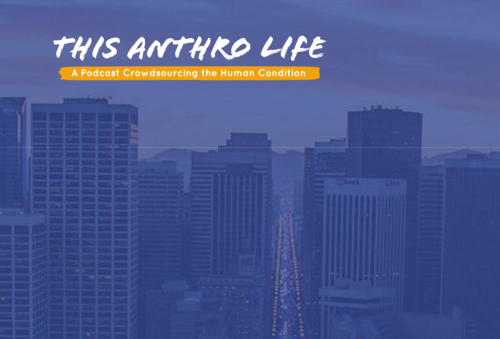
This Anthro Life podcasts on design anthro-pology
This Anthro Life is a round-table, open format discussion of an anthropological take on the people, objects, ideas, and possibilities of everyday life around the world. They are hosted by Adam Gamwell and Ryan Collins and there are nearly 100 to chose from.
[Paper] The Intuitive Appeal of Explainable Machines
The Intuitive Appeal of Explainable Machines by Andrew D. Selbst (Data & Society Research Institute; Yale Information Society Project) and Solon Barocas (Cornell University) February 19, 2018, 59 pages.
Abstract
As algorithmic decision-making has become synonymous with inexplicable decision-making, we have become obsessed with opening the black box. This Article responds to a growing chorus of legal scholars and policymakers demanding explainable machines. Their instinct makes sense; what is unexplainable is usually unaccountable. But the calls for explanation are a reaction to two distinct but often conflated properties of machine-learning models: inscrutability and non intuitiveness. Inscrutability makes one unable to fully grasp the model, while non intuitiveness means one cannot understand why the model’s rules are what they are. Solving inscrutability alone will not resolve law and policy concerns; accountability relates not merely to how models work, but whether they are justified.
In this article, Selbst and Barocas first explain what makes models inscrutable as a technical matter. They then explore two important examples of existing regulation-by-explanation and techniques within machine learning for explaining inscrutable decisions. We show that while these techniques might allow machine learning to comply with existing laws, compliance will rarely be enough to assess whether decision-making rests on a justifiable basis.
They argue that calls for explainable machines have failed to recognize the connection between intuition and evaluation and the limitations of such an approach. A belief in the value of explanation for justification assumes that if only a model is explained, problems will reveal themselves intuitively. Machine learning, however, can uncover relationships that are both non-intuitive and legitimate, frustrating this mode of normative assessment. If justification requires understanding why the model’s rules are what they are, we should seek explanations of the process behind a model’s development and use, not just explanations of the model itself. This article illuminates the explanation-intuition dynamic and offers documentation as an alternative approach to evaluating machine learning models.

The UX of AI
If you aren’t aligned with a human need, you’re just going to build a very powerful system to address a very small — or perhaps nonexistent — problem.
As was the case with the mobile revolution, and the web before that, machine learning will cause us to rethink, restructure, and reconsider what’s possible in virtually every experience we build, writes Josh Lovejoy, UX Designer at Google.
The Google UX community has started an effort called “human-centered machine learning” to help focus and guide that conversation. Using this lens, they look across products to see how machine learning (ML) can stay grounded in human needs while solving for them—in ways that are uniquely possible through ML. The team works across the company to bring UXers up to speed on core ML concepts, understand how to best integrate ML into the UX utility belt, and ensure they are building ML and AI in inclusive ways.
Using Google Clips as a case study, Lovejoy guides us through the core takeaways after three years of building the on-device models, industrial design, and user interface—including what it means in practice to take a human-centered approach to designing an AI-powered product.

Data Ethnographer – The Most Crucial Design Job Of The Future
Ethnography is the study of people and cultures, and ethnographic research is imperative to design research. How does a group relate to or understand a product, what is that group’s needs, what are the tech trends in that group?
Designer Caroline Sinders explains in Fast Co.Design that we need data ethnography, a term she defines as the study of the data that feeds technology, looking at it from a cultural perspective as well as a data science perspective. Data ethnography is a narrower, but no less crucial, field: Data is a reflection of society, and it is not neutral; it is as complex as the people who make it.
Data and artificial intelligence systems are a civil issue, a civic issue, and a human issue. Understanding that data is complicit in how AI works is a step toward making equitable technology systems. Imagine an opensource, transparent, data ethnography group that combines the skill sets of data scientists and ethnographers–imagine the kind of change that could create.

The Anthropology of Wearables: The Self, The Social, and the Autobio-graphical
Sakari Tamminen and Elisabet Holmgren of the Finnish/USA innovation agency Gemic, published a paper on EPIC entitled “ The Anthropology of Wearables: The Self, The Social, and the Autobiographical“.
A wide range of new digital products lumped together under the category of ‘Wearables’ or ‘Wearable Technology’ raises fundamental questions about the way we think about our individual bodies and the species Homo Sapiens. This paper traces three different relationships to what are called the ‘wearables’ and extends the notion to cover all material technologies that mediate our relations between various embodied practices and the world, and beyond pure ‘hi tech’ products. Therefore, this paper develops a general cultural approach to wearables, informed by empirical examples from the US and China, and ends by mapping valuable design spaces for the next generation of digital technologies that are getting closer to our bodies and our skin, even venturing beneath it.
In their paper the authors state that ‘Wearables’ should not be primarily defined through their form factors (technological objects one can ‘wear’) or technical functions such as monitoring, or nudging – the question of wearable technology should be understood in terms of the relationship they have to our bodies, social selves, and our personal identities to arrive at more useful insights about the role of these technologies in our lives.
Tamminen just summarised his January article in a shorter one entitled “Reconsidering the Value of Wearables“.

See also the interview with Intel anthropologist Todd Harple on fashion tech at putting things first.

[Study] Rethinking The Smart City – Democratizing Urban Technology
Rethinking The Smart City – Democratizing Urban Technology By Evgeny Morozov and Francesca Bria Rosa Luxemburg Stiftung, New York Office January 2018.
Download pdf: English version – German version
Following the celebration of the “creative city” (as described by Richard Florida), the “smart city” has become the new flavor of the month—and a brand. It makes clever use of resources, and it attracts money, corporate power, and private industries. Offering us cheap, effective solutions to social and political problems, the smart city is functional, optimized, and safe rather than participatory, sustainable, and fair.
As Evgeny Morozov and Francesca Bria point out, however, the problem is not merely the regulatory impulse of smart technologies. Coming from a political-economic rather than a purely technical perspective, the authors argue that the smart city can only be understood within the context of neoliberalism. In order to remain competitive in the era of austerity politics, cities hand over the management of public infrastructure and services to private companies, both de-centralizing and de-personalizing the political sphere.
How can cities regain control not only over technology, data, and infrastructure, but also over the services that are mediated by smart technologies—such as utilities, transportation, education, and health? Offering a wealth of examples and case studies from across the globe, the authors discuss alternative smart city models, which rely on democratic data ownership regimes, grassroots innovation, and cooperative service provision models.
Laying out what works and what doesn’t in the smart city of today, the authors do not simply advocate for a high-tech version of socialism in the fifth publication of the “City Series” of the Rosa Luxemburg Stifting. By carefully assessing what is at stake and for whom, this timely study offers practical solutions for how cities can be smart while retaining their technological sovereignty.
Evgeny Morozov is a prominent critic of digital capitalism, dealing with questions of how major technology companies are transforming society and democracy. The author of several books, he also writes for various newspapers, including The New York Times, The Economist, The Guardian, and Frankfurter Allgemeine Zeitung.
With a background in social science and innovation economics, Francesca Bria is an expert in digital strategy, technology, and information policy, who is active in various innovation movements advocating for open access, open technologies, and digital rights. She is currently Chief Technology and Digital Innovation Officer at the Barcelona City Council.

Bit by Bit: Social Research in the Digital Age
Bit by Bit: Social Research in the Digital Age by Matthew J. Salganik Princeton University Press 2017, 448 pages [Read online]
An innovative and accessible guide to doing social research in the digital age.
Matthew J. Salganik is professor of sociology at Princeton University, where he is also affiliated with the Center for Information Technology Policy and the Center for Statistics and Machine Learning. His research has been funded by Microsoft, Facebook, and Google, and has been featured on NPR and in such publications as the New Yorker, the New York Times, and the Wall Street Journal.
> Interview with the author (Wired)
Rising Minds LDN |Game Your Brain: The neurological impact of UX
The world is experiencing a merging of media and minds that we haven’t yet created a vocabulary for.
We know that user experience design has the power to respond to what algorithms deem “suitable” to us, but have we understood that this changes the way our brains work in symbiosis with our machines? What if we could understand these changing neurological dynamics as Cognitive or Rich UX as the starting point for our designs to purposely deliver desirable human outcomes?
From using design to combat smoking addiction to nudging concept recognition and formation for autistic users through designed media content to navigation by instinct in immersive environments, Professor Karen Pollitt Cham is exploring all this with her work at the University of Brighton.

The body is the missing link for truly intelligent machines
Ben Medlock, co-founder of SwiftKey, argues that the layered model of cognition is wrong.
The point is that long before we were conscious, thinking beings, our cells were reading data from the environment and working together to mould us into robust, self-sustaining agents. What we take as intelligence, then, is not simply about using symbols to represent the world as it objectively is. Rather, we only have the world as it is revealed to us, which is rooted in our evolved, embodied needs as an organism. Nature ‘has built the apparatus of rationality not just on top of the apparatus of biological regulation, but also from it and with it’, wrote the neuroscientist Antonio Damasio in Descartes’ Error (1994), his seminal book on cognition. In other words, we think with our whole body, not just with the brain.

Anthro-pologies and Futures
Anthropologies and Futures: Researching Emerging and Uncertain Worlds.
Editor(s): Juan Francisco Salazar, Sarah Pink, Andrew Irving, Johannes Sjöberg Bloomsbury Academic May 2017, 288 pages.
Anthropology has a critical, practical role to play in contemporary debates about futures. This game-changing new book presents new ways of conceptualising how to engage with a future-oriented research agenda, demonstrating how anthropologists can approach futures both theoretically and practically, and introducing a set of innovative research methods to tackle this field of research.
Anthropology and Futures brings together a group of leading scholars from across the world, including Sarah Pink, Rayna Rapp, Faye Ginsburg and Paul Stoller. Firmly grounded in ethnographic fieldwork experience, the book’s fifteen chapters traverse ethnographies with people living with HIV/AIDS in Uganda, disability activists in the U.S., young Muslim women in Copenhagen, refugees in Milan, future-makers in Barcelona, planning and land futures in the UK, the design of workspaces in Melbourne, rewilding in the French Pyrenees, and speculative ethnographies among emerging communities in Antarctica.
Taking a strong interdisciplinary approach, the authors respond to growing interest in the topic of futures in anthropology and beyond. This ground-breaking text is a call for more engaged, interventional and applied anthropologies. It is essential reading for students and researchers in anthropology, sociology, cultural studies, design and research methods.
Reviews:
“This collection is the clearest articulation yet of a future-oriented practice for anthropology. It attempts nothing less than a re-centering of anthropology along future temporalities, opening up the field to new dimensions of public engagement by sketching the contours of a fieldwork-based practice centered on emergence, possibility and, ultimately, on the hope for better lives for people in the communities where we work.
The papers in this volume range over multiple subjects, multiple methods and multiple media-multiple approaches to the future in anthropology. The breadth is not only testament to the robustness of the future anthropologies they advocate, but to the centrality of the future to the anthropology we already practice. Engaging a variety of methods (lifestory, interviews, participant observation), a variety of platforms (digital media, performance, photography), the contributors to this collection suggest the ways in which anthropology has always already been about the future, while at the same time gesturing to what anthropology may yet become.
” – Samuel Gerald Collins, Towson University, USA
“Anthropologies and Futures gathers a plethora of innovative perspectives and practices that brilliantly explore how the ethnographic can creatively and critically engage with the yet-to-come. This is an agenda-setting volume that by placing ‘futures’ at the heart of methodological engagement, re-configures the analytic, ethical and political landscapes of anthropology and beyond.” – Mike Michael, University of Exeter, UK
“This book aims to put ethnography and anthropology at the heart of futures study right where they should be. Humans tend to be future-oriented in a social, but not uniform manner; the future is a site of struggle. This is a book which should make readers think and feel. Naturally, you will sometimes disagree with the positions taken, but if ever I met a book I’d like to be an author in, it would be this one.” – Jonathan Paul Marshall, University of Technology Sydney, Australia

From Notes to Narrative
From Notes to Narrative: Writing Ethnographies that Everyone Can Read by Kristen Ghodsee The University of Chicago Press 2016, 160 pages.
Ethnography centers on the culture of everyday life. So it is ironic that most scholars who do research on the intimate experiences of ordinary people write their books in a style that those people cannot understand. In recent years, the ethnographic method has spread from its original home in cultural anthropology to fields such as sociology, marketing, media studies, law, criminology, education, cultural studies, history, geography, and political science. Yet, while more and more students and practitioners are learning how to write ethnographies, there is little or no training on how to write ethnographies well.
From Notes to Narrative picks up where methodological training leaves off. Kristen Ghodsee, an award-winning ethnographer, addresses common issues that arise in ethnographic writing. Ghodsee works through sentence-level details, such as word choice and structure. She also tackles bigger-picture elements, such as how to incorporate theory and ethnographic details, how to effectively deploy dialogue, and how to avoid distracting elements such as long block quotations and in-text citations. She includes excerpts and examples from model ethnographies. The book concludes with a bibliography of other useful writing guides and nearly one hundred examples of eminently readable ethnographic books.
Failing Nudges
Nudges that fail Cass R. Sunstein Behavioural Public Policy, 2017, 1(1), 4-25. doi:10.1017/bpp.2016.3
Why are some nudges ineffective, or at least less effective than choice architects hope and expect? Focusing primarily on default rules, this essay emphasizes two reasons for this.
The first involves strong antecedent preferences on the part of choosers.
The second involves successful “counternudges,” which persuade people to choose in a way that confounds the efforts of choice architects.
Nudges might also be ineffective, and less effective than expected, for five other reasons:
1) some nudges produce confusion in the target audience;
2) some nudges have only short-term effects;
3) some nudges produce “reactance” (though this appears to be rare);
4) some nudges are based on an inaccurate (though initially plausible) understanding on the part of choice architects of what kinds of choice architecture will move people in particular contexts; and
5) some nudges produce compensating behavior, resulting in no net effect.
When a nudge turns out to be insufficiently effective, choice architects have three potential responses:
1) do nothing;
2) nudge better (or differently); and
3) fortify the effects of the nudge, perhaps through counter-counternudges, or perhaps through incentives, mandates, or bans.

The Stuff of Bits
The Stuff of Bits: An Essay on the Materialities of Information by Paul Dourish MIT Press, May 2017 264 pages.
Virtual entities that populate our digital experience, like e-books, virtual worlds, and online stores, are backed by the large-scale physical infrastructures of server farms, fiber optic cables, power plants, and microwave links. But another domain of material constraints also shapes digital living: the digital representations sketched on whiteboards, encoded into software, stored in databases, loaded into computer memory, and transmitted on networks. These digital representations encode aspects of our everyday world and make them available for digital processing. The limits and capacities of those representations carry significant consequences for digital society.
In The Stuff of Bits, Paul Dourish examines the specific materialities that certain digital objects exhibit. He presents four case studies: emulation, the creation of a “virtual” computer inside another; digital spreadsheets and their role in organizational practice; relational databases and the issue of “the databaseable”; and the evolution of digital networking and the representational entailments of network protocols. These case studies demonstrate how a materialist account can offer an entry point to broader concerns—questions of power, policy, and polity in the realm of the digital.
Paul Dourish is Chancellor’s Professor of Informatics and Associate Dean for Research in the Donald Bren School of Information and Computer Sciences at the University of California, Irvine, with courtesy appointments in Computer Science and in Anthropology. His research lies at the intersection of computer science and social science, with a particular interest in ubiquitous and mobile computing and the cultural practices surrounding digital media. He is the author of Where the Action Is: The Foundations of Embodied Interaction and coauthor of Divining a Digital Future: Mess and Mythology in Ubiquitous Computing, both published by the MIT Press.

Data Ethno-graphies
Data Ethnographies Lab is a Lab of the Digital Ethnography Research Center (DERC), at RMIT University in Melbourne, Australia.
The Data Ethnographies Lab investigates the implications of the increasing ubiquity of data in everyday lives and worlds. They approach data from an ethnographic perspective to:
• develop insights into what people do with emergent types of everyday data which surround and are produced by our everyday activities;
• ask how people feel about how their data might be used by others; explore the implications of living in an environment where data is ‘everywhere’;
• examine how data makes a difference and leads to innovation in social, political and organisational change; and
• investigate the pressing question of how big data is impacting on and can add value to the worlds we live in.
The Data Ethnographies Lab approaches data in a unique way. Much existing debate is on how Big Data can be meaningfully engaged with, and what we might learn from it through computational data analytics. The Lab bring to this a novel ethnographic perspective, which takes us deep into the real everyday contexts where data is produced and experienced.
The Lab has published five position papers: personal data in an uncertain world, ethics and data futures, humbling data in a playful world, data stories and broken stories. A March 2017 talk by DERC Director Sarah Pink can be viewed here.

Ten principles for Design in the Age of AI
Swiss designer Yves Béhar points out that there are no high-level manifestos or guidelines for designers working with AI, robotics, and connected technology today. Last week, in a talk delivered at the inaugural A/D/O/ Design Festival in Brooklyn, Béhar presented his vision for what those guidelines should look like in the form of 10 principles for design in the age of AI.
They are:
1) Design solves an important human problem
2) Design is context specific (it doesn’t follow historical cliches)
3) Design enhances human ability (without replacing the human)
4) Good design works for everyone, everyday
5) Good tech and design is discreet
6) Good design is a platform that grows with needs and opportunities
7) Good design brings about products and services that build long-term relationships (but don’t create emotional dependency)
8) Good technology design learns and predicts human behavior
9) Good design accelerates new ideas
10) Good design removes complexity from life

Sensemaking
Sensemaking: The Power of the Humanities in the Age of the Algorithm by Christian Madsbjerg / Hachette Books.
Based on his work at some of the world’s largest companies, including Ford, Adidas, and Chanel, Christian Madsbjerg’s Sensemaking is a provocative stand against the tyranny of big data and scientism, and an urgent, overdue defense of human intelligence.
Humans have become subservient to algorithms. Every day brings a new Moneyballfix–a math whiz who will crack open an industry with clean fact-based analysis rather than human intuition and experience. As a result, we have stopped thinking. Machines do it for us.
Christian Madsbjerg argues that our fixation with data often masks stunning deficiencies, and the risks for humankind are enormous. Blind devotion to number crunching imperils our businesses, our educations, our governments, and our life savings. Too many companies have lost touch with the humanity of their customers, while marginalizing workers with liberal arts-based skills. Contrary to popular thinking, Madsbjerg shows how many of today’s biggest success stories stem not from “quant” thinking but from deep, nuanced engagement with culture, language, and history. He calls his method sensemaking.
Madsbjerg lays out five principles for how business leaders, entrepreneurs, and individuals can use it to solve their thorniest problems. He profiles companies using sensemaking to connect with new customers, and takes readers inside the work process of sensemaking “connoisseurs” like investor George Soros, architect Bjarke Ingels, and others.

GREAT WAVE DATA
With augmented reality (AR) and virtual reality (VR) becoming the next computing platforms, app developers have been increasingly focused on building AR and VR apps.
One of the companies that aim to be on the cutting edge of Analytics VR and AR app development is GREAT WAVE. By helping people understand and analyze data more quickly, such a tool could provide richer, more insightful experiences than the ones derived from paper and screens. Studies conducted by researchers at Stanford and by the neuroscience and analytics team of the AR developers META (in conjunction with Accenture) demonstrate how the use of 3D information could amplify people's efficiency and ability to focus on tasks.
Have a look at the video of GREAT WAVE:
PRESUMPTIVE PREDICATIONS
CONSCIOUSNESS REFRAMED - art and consciousness in the post-biological era. 2016
I will give a talk on Storytelling in MR environments at the Consciousness Reframed Conference, taking place end of this month in Shanghai, China.
On the conference:
As new media art grows old, is a new art arising? How do competing theories of the origin and location of consciousness impact on art practice? Was the coupling of art and science a marriage of convenience or a matter of true love? Could a new spirituality cause the divorce? Is there a nonlinear online aesthetic? Do survivors of the digital art era have refugee status in the new world of technological transmodalities? Is analogue anxiety a symptom of digital depression? Where can we locate the technological sublime? If Additive Art is solidly object oriented, can 3D printing become pure process? Will post-personal art be a consequence of the postbiological? Will the autonomous robot develop an autonomous aesthetics?
These questions form the background to the conference of artists, scholars, scientists, and engineers that will constitute Consciousness Reframed 2016 Consciousness Reframed is a forum for transdisciplinary inquiry into art, science, technology, and consciousness, drawing upon the expertise and insights of artists, designers, architects, performers, musicians, writers, scientists, and scholars, from many countries.
“Presumptive Predications - Consciousness Reframed: art and consciousness in the post-biological era. 2016” will be held on 26th - 27th November2016 at DeTao Shanghai CCIC Building and M50 Creative Park.

2D VS 3D
Given the lack of studies that have systematically examined the perceptual cues that our brains use to rapidly process procedural tasks – META decided to partner with Accenture Labs on a pilot study examining the use of perceptual cues in AR. More specifically, they wanted to measure the effect an additional perceptual cue (motion) would have on the time it takes to complete a procedural task. The team operated under the hypothesis that integrating both stereo and motion perceptual cues could further reduce the limitations of 2D instructions – ultimately enabling people to more quickly complete a procedural task.
At this year's Bay to Breakers pre-race expo, the colorful annual footrace in San Francisco (California), the team of Meta and Accenture researchers set up the procedural task of assembling a physical lighthouse Lego set.
They defined three conditions based on the different types of instructions participants were to receive:2D Paper, Holographic Static 3D (Stereo Cue), and Holographic Dynamic 3D (Stereo & Motion Cues).
Comparing the three instruction conditions, they found that Dynamic 3D Instructions enabled participants to more quickly complete each step. Participants using Static 3D Instructions and 2D Paper Instructions were much slower in comparison. This confirmed their hypothesis that the use of both the stereo and motion perceptual cues in AR instructions speeds up assembly time. Interestingly enough, the researchers found that participants using Static 3D Instructions were the slowest of the three instruction conditions. This was especially surprising to them because based on past studies conducted in 2003 and 2013 , they expected people using any kind of 3D instructions to perform the Lego building task more quickly than those using paper 2D Paper Instructions.
Check out this video:
LOUIS-PHILIPPE DEMERS - ARTIFICIAL THEATRE
I invited Louis-Philippe Demers for a talk at our CGI - International Seminar series.
Louis-Philippe Demers makes large-scale installations and performances. His projects can be found in theatre, opera, subway stations, art museums, science museums, music events and trade shows. Over the past two decades, he participated in more than seventy artistic and stage productions and has built more than 350 machines.
Demers was Professor of Digital Media and Exhibit Design/Scenography at the Hochschule fuer Gestaltung Karlsruhe, affiliated to the world renowned Zentrum fuer Kunst und Medientechnologie (ZKM, Germany). Since he joined the Interaction and Entertainment Research Centre and the newly founded School of Art, Design and Media at the Nanyang Technological University.
On the talk: Theatre has always been the test bed of illusions. The illusion of the actor replaced by a machine signifies the fantasies found in the scientific and the science-fiction communities. However, what Louis-Philippe Demers is targeting here is not the artifice but the uncomfortable communalities between the flesh and the mechanical bodies. Having these radical encounters at the liminal space bordering man and machine, it forces audiences to (re)consider their human bodies and the latest transforms in the history of their own embodied experiences.

OCTAGON AR
Worked with the Octagon AR platform. Octagon AR is an application that allows users creating their own marker to display 3D models from their library or the user´s personal library. Interesting, and useful applications for education.

EMPATHETIC THINGS
Contributed a chapter on "Empathetic Things" to the publication " Transdiscourse 2- Turbulence and Reconstruction", De Gruyter.
Turbulence and Reconstruction is an anthology of viewpoints on society from the arts and the sciences. The authors believe that the arts and the sciences are effective spaces to encourage us to think differently about our outdated concepts of representation and categorization and reconstruct new potentials about how the designs of the future might benefit our environment and the survival of our bodies. Essential to all writers is the need to drop our old disciplinary boundaries to question our interdependent relationship to technology and to reality. Turbulence and reconstruction are processes that not only affect our representation and categorization, urban nature and energy consumption but also our relation to media and technology – the digital ideologies of interaction and substitution.

Models of Diversity
Gave a talk on New Narratives at the conference Models of Diversity at the ETH and ZHDK Zurich.
The main aim of this conference was to create 3-way discourses to search for correlations and models that can foster deeper creative levels of discourses across the disciplines of art, science, sociology and philosophy. A round table conference with paired presentations of art researcher, scientists and theorists in diverse fields of inquiry-alongside dynamic moderators who tried to stimulate discourse.
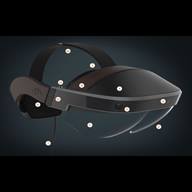
AUGMENTED NARRATIVES
I started my new research-project on Augmented Narratives which will involve the platforms of META2 and OCTAGON. For users, good UX-design for Augmented Reality platforms should facilitate physical and psychological immersion in the mediated experience. A holistic, multi-dimensional approach that incorporates qualitative experience and a deep understanding of the psychological aspects of optimum user experience are an imperative for such environments to be successful.
The creation of such a flexible, holistic, and enveloping environment that allows well-tuned variations and personalized adjustments, requires new forms of digital storytelling and the application of new user experience-design paradigms - based on a deep knowledge of the users’ data-scape. How can we can assess and organize these new worlds - in order to create the best experiences?

PROJECT TANGO
Had the chance to explore Google's Tango with a team of developers. Great software and it is to hope that it can live up to its potential. The first consumer implementation will be in a package with Lenovo's PHAB PRO later this year.
The essential aim is to give your mobile device full spatial awareness, or the ability to understand your environment and your relation to it, to get your smartphone to understand the world around it, enabling it to provide augmented reality experiences. A Project Tango device 'sees' the environment around it through a combination of three core functions.
First up is motion tracking, which allows the device to understand its position and orientation using a range of sensors (including accelerometer and gyroscope). Further, it involves depth perception, it is able to examine the shape of the world around you. Here it relies on Intel's RealSense 3D camera. it helps the device to gain accurate gesture control and snappy 3D object rendering among a number of other features.
Additionally, Project Tango incorporates area learning, which means that it maps out and remembers the area around it.
UNCOVERING THE GRAMMAR OF VR
Saschka Unseld - Uncovering the Grammar of VR from Future Of StoryTelling on Vimeo.
In virtual reality, you are at the center of every story. Saschka Unseld, head of Oculus Story Studio, wants to keep you there, experiencing virtual worlds directly, with characters who interact with you in real time. You read a book and you watch a film, but in virtual reality, you experience a story. It’s told through your senses, and Unseld and his team are now discovering what that means—how characters should react to you, how to make your experience interactive and responsive. It’s a learning curve that’s just beginning—built on a heritage of storytelling but breaking down the fourth wall in a new way. Unseld shared some of what his studio is learning at this year’s Future of Storytelling Conference.
The studio has already released two short form experiences, Lost and Henry. The latter was intended to be a comedy, but as Unseld explained, it was difficult to keep if from being a tragedy:
With Henry, for example what we did, we thought, “Okay, let’s try to tell a comedy — typical slapstick kind of animated character comedy.”
The final film turned out to be more sad than funny. If you would cut it as a film, exactly the same thing, you would have a lot of laughs. But in VR, you don’t. If someone falls on their face right next to you, it’s not funny.
In cinema, you have something like the fourth wall, which means there is this wall between the story and the world and the audience. In VR, there is no such thing as a fourth wall, because in VR you are right there with the characters in the world.
Henry's Premiere from Story Studio on

BENJAMIN SEIDE
Benjamin Seide was a guest of our CGI - International Seminar series. Seide, an Associate Professor for Visual Effects and Animation at the Nanyang Technological University Singapore gave insights into the Art of VFX and his work on JJ Abraham's Star Trek Into The Darkness, Martin Scorsese’s Hugo (Academy Award Oscar 2012 for Best Visual Effects) and HBO's Game of Thrones Season 2 (Emmy Award for Best Visual Effects).
UNDERSTANDING PERCEPTION
Lazy Chief , a Studio in London, translated the studies of neuroscientist Beau Lotto into motion design. The 4-minute short film explains the way that evolution has shaped the way we perceive the world.
Beau Lotto – Understanding Perception: How We Experience the Meaning We Create from Future Of StoryTelling on Vimeo.
One important statement for visual designers, is that our brains don’t differentiate between imagined stimuli and real stimuli. Professor Lotto explains: [W]hat’s remarkable is that when we imagine something, it activates the same part of our brain as if we’re actually seeing it. So imagined perception is the same as a real perception.
This has tremendous impact for thinking about the narratives that a culture tells itself.

Advances in Visual Methodology
A stunning collection of cutting-edge essays which brings together the leading scholars in visual research. Clearly structured, and written in an engaging and accessible style throughout, this invigorating work will be the ‘must have’ text for teachers and students of `the visual’ across the arts, humanities and social sciences.
– Elaine Campbell, Reader in Criminology, Newcastle University
This is a book about research that takes the challenge of the internet seriously, that rises above disciplinary difference and points to new directions for social research.
– Rob Walker, Emeritus Professor, University of East Anglia
This innovative book examines and introduces cutting edge visual methods in social research.
It explores the development of visual methodology as a field of interdisciplinary and post-disciplinary practice spanning scholarly and applied concerns. Positioned at the innovative edge of theory and practice in contemporary visual research, Pink’s engaging book goes beyond the methods, ideas and fields of practice outlined in existing texts and handbooks.
This book examines:
-How new theoretical and methodological engagements are developing and emerging in research practice;
-the impact new approaches are having on the types of knowledge visual research produces and critiques;
-the ways visual research intersects with new media;
-and the implications for social and cultural research, scholarship and intervention.
This book will be essential reading for any student or researcher thinking of using visual methods in their own research.
Sarah Pink is Professor of Social Sciences at Loughborough University.

Seductive Interaction Design
What happens when you’ve built a great website or app, but no one seems to care? How do you get people to stick around long enough to see how your service might be of value? In Seductive Interaction Design, speaker and author Stephen P. Anderson takes a fresh approach to designing sites and interactions based on the stages of seduction. This beautifully designed book examines what motivates people to act.
Topics include:
• AESTHETICS, BEAUTY, AND BEHAVIOR: Why do striking visuals grab our attention? And how do emotions affect judgment and behavior?
• PLAYFUL SEDUCTION: How do you create playful engagements during the moment? Why are serendipity, arousal, rewards, and other delights critical to a good experience?
• THE SUBTLE ART OF SEDUCTION: How do you put people at ease through clear and suggestive language? What are some subtle ways to influence behavior and get people to move from intent to action?
• THE GAME OF SEDUCTION: How do you continue motivating people long after the first encounter? Are there lessons to be gained from learning theories or game design?
Principles from psychology are found throughout the book, along with dozens of examples showing how these techniques have been applied with great success. In addition, each section includes interviews with influential web and interaction designers.

Mobile Social and Fun: Games for Health
This complimentary report authored by independent analyst Bonnie Feldman with input from MobiHealthNews covers much of the activity going on in the mobile-enabled games for health space. Mobile Social and Fun: Games for Health will appeal to readers who are both new to the subject and, thanks to the dozens of sources interviewed, those who have worked in mobile health games for years.
Download the pdf of the report here
Via: mobilehealthnews

Psychocinematics: Exploring Cognition at the Movies
Largely through trial and error, filmmakers have developed engaging techniques that capture our sensations, thoughts, and feelings. Philosophers and film theorists have thought deeply about the nature and impact of these techniques, yet few scientists have delved into empirical analyses of our movie experience-or what Arthur P. Shimamura has coined “psychocinematics.”
This edited volume introduces this exciting field by bringing together film theorists, philosophers, psychologists, and neuroscientists to consider the viability of a scientific approach to our movie experience.

Garments of Paradise: Wearable Discourse in the Digital Age
Wearable technology — whether a Walkman in the 1970s, an LED-illuminated gown in the 2000s, or Google Glass today — makes the wearer visible in a technologically literate environment. Twenty years ago, wearable technology reflected cultural preoccupations with cyborgs and augmented reality; today, it reflects our newer needs for mobility and connectedness. In this book, Susan Elizabeth Ryan examines wearable technology as an evolving set of ideas and their contexts, always with an eye on actual wearables — on clothing, dress, and the histories and social relations they represent. She proposes that wearable technologies comprise a pragmatics of enhanced communication in a social landscape. “Garments of paradise” is a reference to wearable technology’s promise of physical and mental enhancements. Ryan defines “dress acts” — hybrid acts of communication in which the behavior of wearing is bound up with the materiality of garments and devices — and focuses on the use of digital technology as part of such systems of meaning. She connects the ideas of dress and technology historically, in terms of major discourses of art and culture, and in terms of mass media and media culture, citing such thinkers as Giorgio Agamben, Manuel De Landa, and Gilles Deleuze and Felix Guattari. She examines the early history of wearable technology as it emerged in research labs; the impact of ubiquitous and affective approaches to computing; interaction design and the idea of wearable technology as a language of embodied technology; and the influence of open source ideology. Finally, she considers the future, as wearing technologies becomes an increasingly naturalized aspect of our social behavior.
Buy the book
ENGAGE
I am always interested to participate in innovative projects that explore the new realities forming between the digital and physical worlds as infrastructure, services, things - and tell stories in new ways.
OPEN PROJECTS
One of the most important aspects of the projects is to build an effective team. We work together in groups with people from diverse backgrounds - technologists, neuroscientists, filmmakers, writers, and designers - and we support each other to create efficiencies of effort and focus attention on areas that require further development.
If you are interested contact: engage@storycodes.com
DATA
-
2016
Models of Diversity, Zurich
BKK Innovation Lab -
2013
Audio-Visual Avantgarde of Austria, Vienna -
2012
Intimate Technologies, TCDC Bangkok -
2011
Towards the Affect of Intimacy, MADR Plymouth -
2009
Triennale 01, Lentos Kunstmuseum, Linz
RencontresInternationales, Berlin
Social Games, Central Academy of Fine Arts, Beijing
The Power of Play, International Conference on Learning and Technology, CIDE 2009 -
2008
Equaleyes Reboot, Museumsquartier Vienna
RencontresInternationales, Paris
Audiovisions Future Cinema, Zagreb
3D archetypes, ABAC University Bangkok
FS21 / Frameout Festival, Vienna
DIGITAL MEDIA 1.0: Abstracts Of Syn., València -
2007
Playful Subjects, Bristol
Relational Artifacts, Multimedia Center Mexico City
The Order Of Things: Dis/Order, Antwerp
Moving Patterns, ACF, NYC
Applied Play, Game City, Vienna -
2006
Austrian Cinema 1995-2005, ARCO Madrid Light Cone Show, Centre Pompidou, Paris
Sonar Files, Barcelona
IVAC / La Filmoteca, València
Centro Galego De Artes Da Imaxe, La Coruna
Filmoteca De Catalunya, Barcelona -
2005
Runtime Art, Multimedia Center Split
Playgrounds, UKS Oslo
Fusion 05, Art & Science Conference, Lucerne
Digital Arts Forum, Sripatum University Bangkok -
2004
De Cine Independente Festival, IFF Buenos Aires
Tampere International Short, Finland
RencontresAudiovisuelles, Lille / F
Chicago Cultural Center
Filmfestival Pesaro
ISEA International Society For Electronic Arts, Helsinki, Stockholm
Version>04: Invisiblenetworks, Chicago
ORAI, workshop on intermedia strategies, MAF 04 -
2003
Imagescodes, ZKM Karlsruhe
Melting Pop, Palazzo DellePapesse, Siena
360 X 240, Next Five Minutes, Vis
Abstraction Now / Maths In Motion, Künstlerhaus Wien
Filmfestival Edinburgh
Freunde Der DeutschenKinemathek, E.V. Berlin
From content to context, Multimedia Institute Split
ACREQ, Montreal/Quebec
Sonar 04, Barcelona -
2002
Becoming Digital, Mi2 Medialab Zagreb
MUTEK, Montreal
Digital Narratives, Summer Academy, Salzburg
Structuring The Image - Austrian Experimental Film And Video, Int. Filmfestival Leeds
Intercultural VideoartExibition - Europe, Video Art Center Tokyo
Film And Electronica, Austrian Cultural Forum NYC
Pervasive Games, Kapelica Gallery, Ljubljana -
2001
Norwegian Short Film Festival (Cat.)
Mixmove 01 - Recontres Des Creations, Paris
Videocentric, Video Art Biennale, YYZ Gallery, Toronto (Cat.)
THAW01, Iowa Mediafestival
Mediarama, Sevilla (Cat.)
game related tendencies in audiovisual media, UKS, Oslo
BKA Berlin
Videographe Montréal
Dnamic Archives HISK Higher Institute for Education in Arts, Antwerp
Pacific Film Archive Evanston (USA), Berkeley,
Block Cinema Videoexperimental, Zurich
Performer - Tendencies In Media Art , Oslo
WRO 01, Media Art Biennale, Wroclaw (Cat.)
InterMedia, University of Arts, Berlin -
2000
Sounds & Files, Künstlerhaus Wien
Synthetic Pleasures, Int. Kurzfilmtage Oberhausen (Cat.)
Denver 2000 - Int. Film Festival (Cat.)
Sonar 2000, Media Festival Barcelona New York Film Festival
Light Cone Audiovisuals, Paris
New Media Workshop, Hong Kong Arts Centre
Transat Video, Hrouville Saint-Clair Cedex
International Biennale of Arts, Venice
Cinematexas, Austin / USA (Cat.)
Avanto Int. Media Art 2000, Museum of Contemporary Art, Helsinki -
1999
INVIDEO 99 - Biennale D‘ Milano (Cat.)
Transmediale 99, Berlin (Cat.)
Diagonale, Festival Des Österreichischen Films, Graz (Cat.)
Pitchfever - Young European Media Art, Gent (Cat.)
International Videofestival Bochum (Cat.)
streaming analogue/digital, Digitale ConferenceMuseum Ludwig, Cologne
Copy & Paste, Drag & Drop, Kunstraum Innsbruck (Cat.)
Reboot Kunst NRW Und NL (Cat.)
Festival For New Film & New Media Montreal (Cat.)
Re_Public, KunstmagazinSaiten, St. Gallen (Cat.)
Audiovisuals, Filmcasino Vienna
Chambers, Klangturm St. Pölten -
1998
Diagonale, Festival of Austrian Film, Graz (Cat.)
European Media Art Festival, Osnabrück (Cat.)
Videoformes, Festival For Media Art, Clermont-Ferrand (Cat.)
InternationalesVideofestival Bochum (Cat.)
Analog/Digital, Ok ZentrumFürGegenwartskunst, Linz -
1997
WRO Media Art Biennale, Breslau (Cat.)
Videoformes, Festival of Media Art, Clermont-Ferrand (Cat.)
L’immagineLeggera, Media Art Festival, Palermo (Cat.) “Art
Electroniques&Cybertheque, Lyon
15th Worldwidevideofestival, Stedelijk Museum, Amsterdam (Cat.) -
1996
European Media Art Festival, Osnabrück (Cat.)
Viper, International Multimedia Festival, Luzern (Cat.)
IntVideoArtAwards, ZKM (Cat.)
Poptv, Museum Of Contemporary Art, Found. Luigi Pecci/Prato (Cat.)







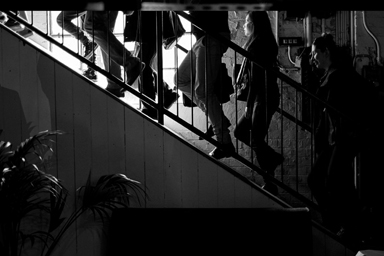


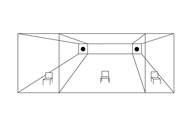






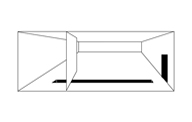
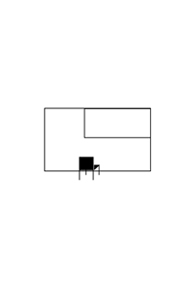






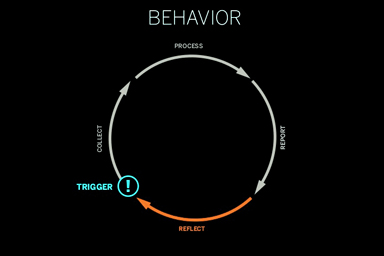










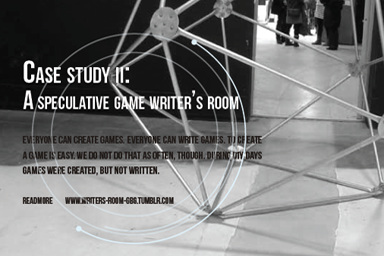




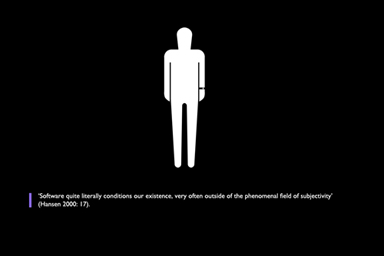









Instagram
Twitter
Will digital lightfields make your life brighter?
Blog
Stories take place in the imaginationbut they are a multisensory experience.